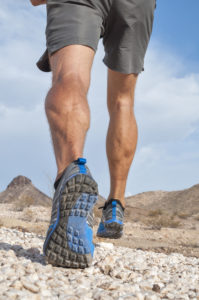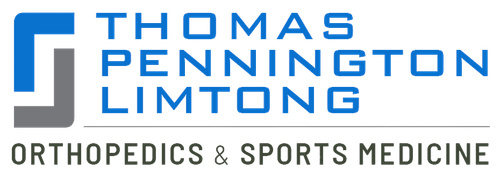 The ankle can develop a variety of ailments, which can cause discomfort and hamper the functional ability of the ankle. Board certified orthopedic surgeons Dr. Steven Thomas and Dr. Gregory Bigler provide fantastic, incredible, and critical solutions for ankle ailments. Patients in Las Vegas, Nevada and surrounding locations have an opportunity to receive cutting edge treatments from Dr. Thomas and Dr. Bigler.
The ankle can develop a variety of ailments, which can cause discomfort and hamper the functional ability of the ankle. Board certified orthopedic surgeons Dr. Steven Thomas and Dr. Gregory Bigler provide fantastic, incredible, and critical solutions for ankle ailments. Patients in Las Vegas, Nevada and surrounding locations have an opportunity to receive cutting edge treatments from Dr. Thomas and Dr. Bigler.
Achilles Tendinitis
Achilles tendinitis refers to an inflammatory response, but it is limited by the fact that the Achilles tendon receives little blood supply. It involves inflammation of the enveloping sheath, degeneration within the substance of the tendon, or a combination of the two.
Achilles Tendinosis
In this ailment, the Achilles tendon becomes degenerative and inflamed. The tendon can swell and create pain. Athletes and patients with calf tightness may suffer from this condition. The condition may sometimes occur in the middle of the tendon or at the point where the heel bone and the tendon connect.
Ankle Fracture
Full or partial break in the ankle bone is called ankle fracture. It may involve the distal ends of the tibia, the fibula or both. Ankle fractures can range from less severe avulsion injuries to more serious, shattering type breaks. Some ankle fractures may also involve injury to vital ankle ligaments that allow the ankle to retain its normal position.
Ankle Sprain
Tearing of the ligaments of the ankle is known as an ankle sprain. Most commonly, the ankle sprain will occur on the lateral or outside portion of the ankle. This injury affects many people during a variety of activities. While usually it occurs in isolation, it may occasionally occur in the setting of an ankle fracture when the ankle bones are also broken.
Arthritis of the Foot and Ankle
As a person grows older, they may experience pain and stiffness in the ankles and feet, which could be arthritis. The nagging pain caused by this condition can worsen over time, if it is not treated early. Sometimes the pain may become so severe that the patient’s ability to walk is compromised. Severe arthritis of the foot and ankle can limit the quality of life, but treatment can slow the degeneration.
Chronic Lateral Ankle Pain
Chronic or recurring pain on the outer side of the ankle is called lateral ankle pain. This condition often develops following an ankle injury such as a sprained ankle. But sometimes other conditions may lead to the development of chronic lateral ankle pain.
High Ankle Sprain
The high ankle ligaments are located above the ankle, unlike the ligaments on the outside of the ankle which are more commonly injured. The high ankle ligaments connect the fibula and the tibia. A sprain in the high ankle may occur when there is damage and tearing of the high ankle ligaments.
Other ankle injuries include pilon fracture and talus fracture, which are more complex problems to treat. Dr. Thomas and Dr. Bigler are board certified orthopedic surgeons receiving patients from Las Vegas, Nevada for various ankle treatments.
If you would like to schedule an appointment or learn more about the Knee and Shoulder Institute procedures & treatments performed by Las Vegas, Nevada board certified surgeons Steven C. Thomas, MD and Gregory T. Bigler, MD. call (702) 933-9393; Physical Therapy (702) 933-9394

 An
An  If a
If a  A
A  The precise nature of a shoulder injury can be diagnosed when the surgeon evaluates the patient’s medical history, performs a physical exam, and conducts tests such as x-rays, ultrasound, or MRIs. Board certified orthopedic surgeons
The precise nature of a shoulder injury can be diagnosed when the surgeon evaluates the patient’s medical history, performs a physical exam, and conducts tests such as x-rays, ultrasound, or MRIs. Board certified orthopedic surgeons  The ends of the ankle joint bones are called malleoli. The tibia bone has two malleoli in the medial and posterior, while the fibula has one, which is laterally placed. Ankle fractures take place when the melleoli are broken. These are common fractures, which may occur after a fall, automobile accident, or simply twisting of the ankle. One, two, or all three malleoli may be broken.
The ends of the ankle joint bones are called malleoli. The tibia bone has two malleoli in the medial and posterior, while the fibula has one, which is laterally placed. Ankle fractures take place when the melleoli are broken. These are common fractures, which may occur after a fall, automobile accident, or simply twisting of the ankle. One, two, or all three malleoli may be broken. ne of the most common injuries is the
ne of the most common injuries is the 
 Sports medicine is a highly specialized field, which encompasses a wide range of surgical as well as non-surgical treatments for injuries sustained during a sport or another aggressive physical activity.
Sports medicine is a highly specialized field, which encompasses a wide range of surgical as well as non-surgical treatments for injuries sustained during a sport or another aggressive physical activity.